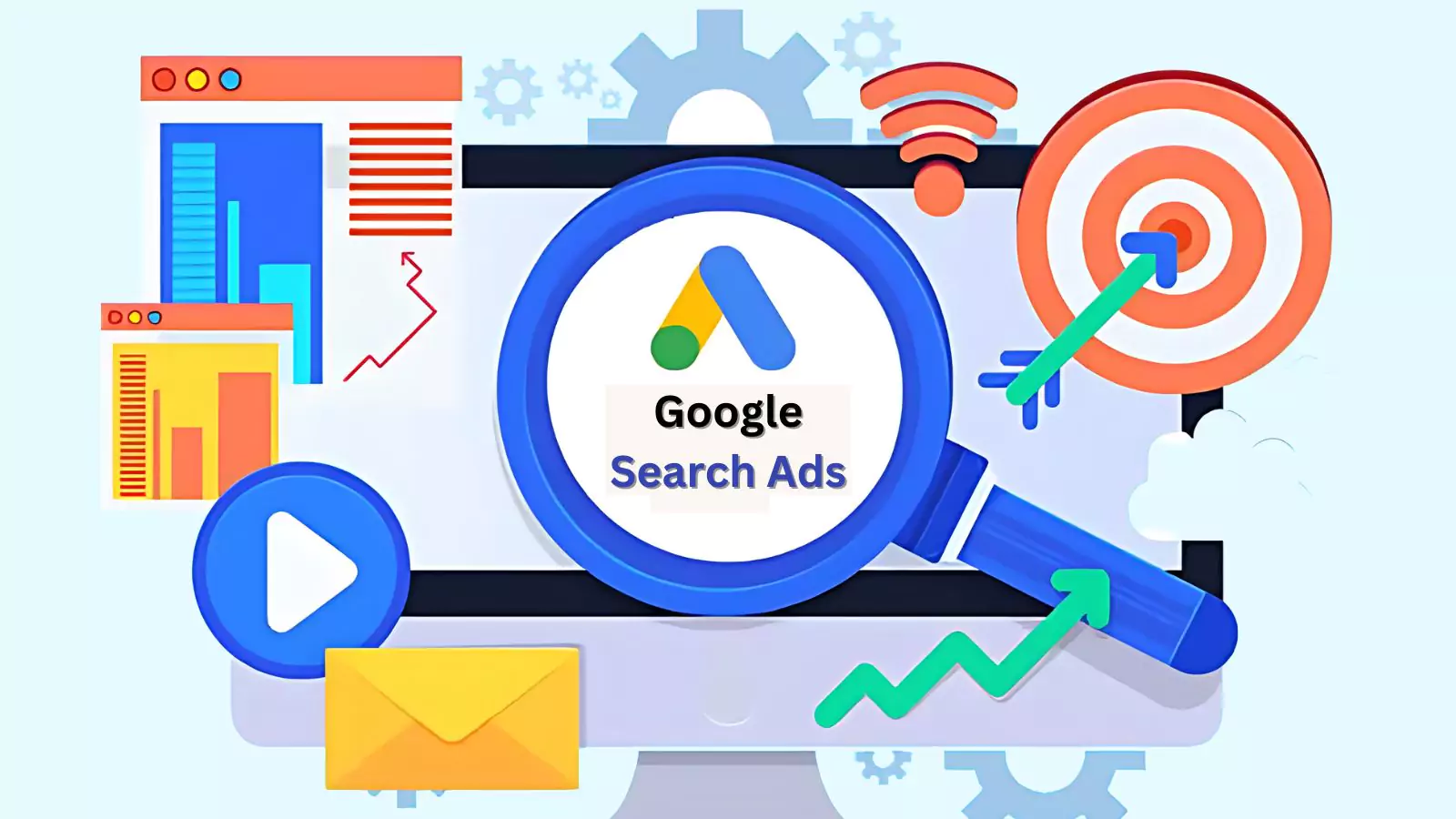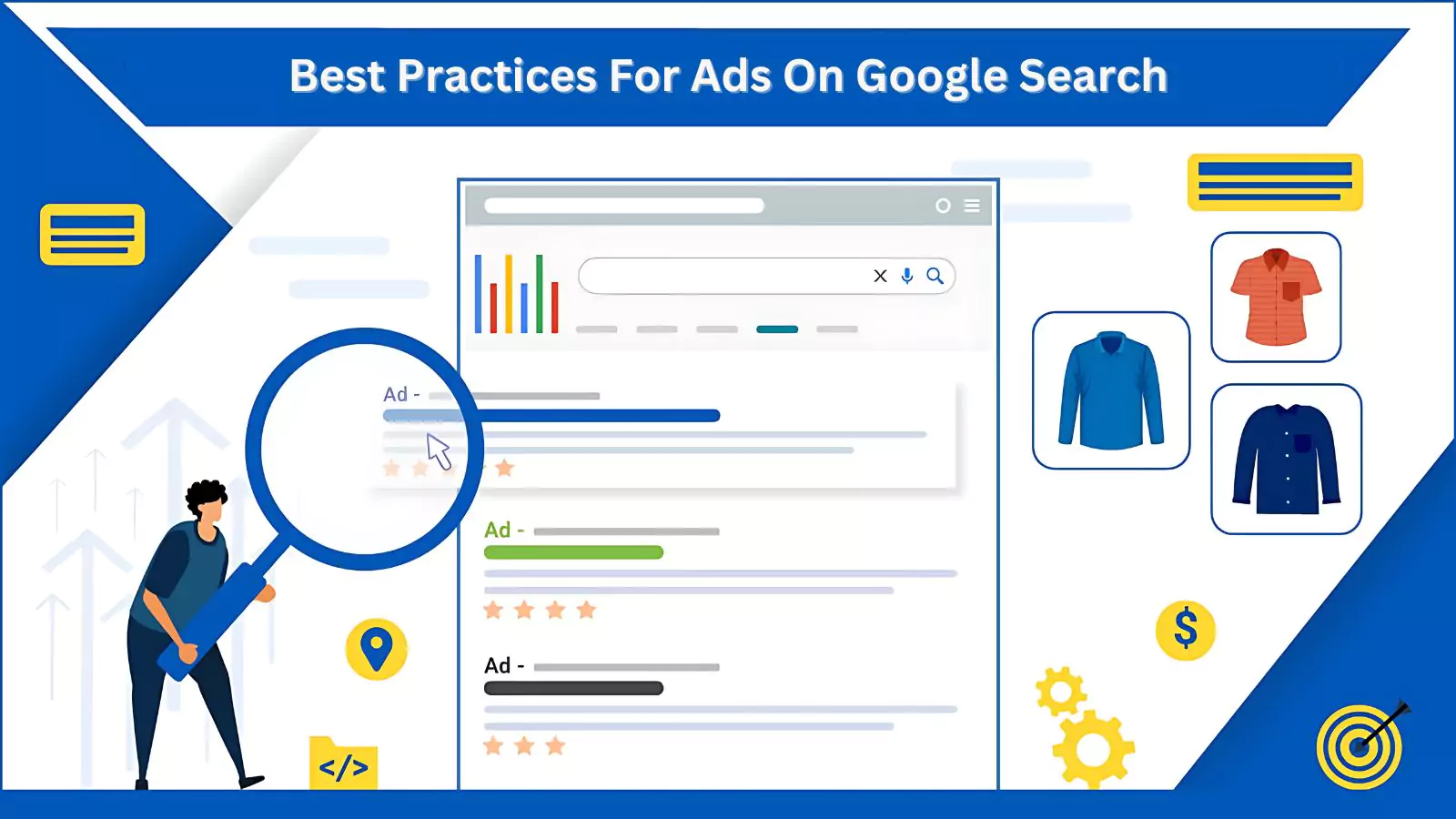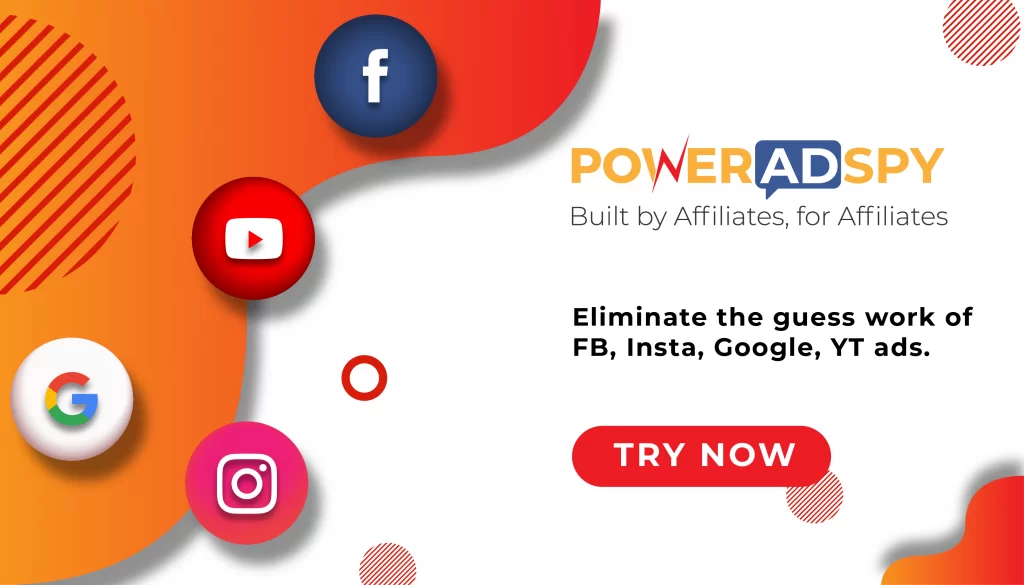How To Build Effective Ads On Google Search: A Step-by-Step Guide
When users search on Google, they typically seek solutions or products that address their immediate needs. Ads on Google search capitalize on this intent, placing your business at the top of search results when potential customers actively seek what you offer.
In this blog, we’ll dive into the world of ads on Google search, exploring how they function, why they are crucial for your marketing strategy, and how you can optimize them to drive meaningful results for your business.
Let’s Start!
Listen To The Podcast Now!
What Are Ads On Google Search?
This form of online advertising appears on Google’s search engine results pages (SERPs). Designed to assist- businesses in reaching potential customers, these ads target specific keywords or phrases related to their products or services. Unlike organic search results, which are determined- by Google’s algorithms based on relevance and quality, ads on Google Search are paid placements that ensure visibility for advertisers.
These ads typically consist of a headline, a brief description, and a URL, and they are labeled as “Sponsored” or “Ad” to distinguish them from organic results. The primary goal of these ads is to drive targeted traffic to the advertiser’s website by appearing prominently at the top or bottom of the search results, making it an effective way to advertise on Google.
How These Ads Are Displayed On Google Search Results Pages?
Ads on Google Search are displayed based on a combination of factors, including the keywords users search for, the relevance of the ad to those keywords, and the advertiser’s bid. When a user enters a search query, Google’s auction system evaluates the ads that are eligible to appear based on the selected keywords. Ads with the highest bid and quality score are more likely- to be displayed in prime positions.
These ads can appear in various formats:
- Text Ads: The most common format consists of a headline, two description lines, and a display URL.
- Responsive Search Ads: These ads adjust dynamically to align with the user’s query by modifying the headlines and descriptions.
- Call-Only Ads: Designed specifically- to encourage phone calls, these ads include a phone number as the primary call-to-action.
Ads on Google Search are strategically placed- to capture the attention of users actively searching for relevant terms, making them a powerful tool for driving qualified traffic and achieving marketing goals.
To enhance your Google Search ad strategy, utilizing Google ad spy tools like PowerAdSpy can provide valuable insights into your competitors’ Google ads strategies and performance. By analyzing successful ad campaigns, you can refine your approach to maximize your ad impact and drive better results.
PowerAdSpy: Advanced AI-ad Intelligence Tool
PowerAdSpy leverages artificial intelligence to provide comprehensive insights into ad campaigns across various platforms. It enables businesses to track and analyze competitor ads, uncover industry trends, and optimize their advertising strategies. With its robust feature set, PowerAdSpy helps users make data-driven decisions that can significantly boost ad performance.
Key Features of PowerAdSpy
- Competitor Analysis: PowerAdSpy allows users to monitor competitors’ ad strategies, including their targeting tactics, ad formats, and engagement metrics. This insight helps businesses understand what works in their industry and adapt their strategies accordingly.
- AI-Driven Insights: The tool utilizes advanced AI algorithms to analyze large volumes of ad data quickly and accurately. It identifies patterns and trends that may not be immediately apparent, providing users with actionable recommendations for optimizing their ads.
- Detailed Ad Reports: PowerAdSpy generates detailed reports on ad performance, including metrics such as click-through rates (CTR), conversion rates, and audience demographics. These reports enable marketers to assess the effectiveness of their campaigns and make necessary adjustments.
- Trend Detection: By analyzing historical ad data, PowerAdSpy identifies emerging trends and shifts in consumer behavior. It allows businesses to stay ahead of the curve and adjust their advertising strategies in real-time.
- Customizable Alerts: Users can set up alerts for specific keywords, competitors, or ad performance metrics. This feature ensures that marketers are notified of significant changes or opportunities as soon as they arise.
PowerAdSpy- Google ad spy tool provides a comprehensive suite of tools and insights that can enhance your ads on Google Search campaigns. From competitor analysis and keyword research to performance tracking and trend identification, PowerAdSpy equips you with the information needed to optimize your ads and achieve better results in the competitive landscape of search advertising.
How To Create Ads On Google Search?
You’ve reached the heart of setting up your ads on the Google Search campaign. Let’s walk through the process step-by-step.
1. Start in Your Dashboard
Sign in to Google Ads: Start by logging into your Google Ads account. Your dashboard will display an overview of your account. To start a new campaign, click on the blue “+ New Campaign” button prominently located on the dashboard.
2. Create Your Campaign
Campaign Level Decisions: The campaign level is crucial because it sets the foundation for your ads. Unlike other platforms where the focus might be on objectives, in Google Ads, you also make key decisions about how your ads will run and be structured.
3. Choose Your Objective
Objective Selection: Choose a campaign objective based on- what you want to achieve. Google Ads offers several objectives:
- Sales: Increase sales through various channels (online, phone, in-store, app).
- Leads: Generate leads and collect contact information.
- Website Traffic: Attract more visitors to your website.
- Product and Brand Consideration: Make users more aware of your products or brand.
- Brand Awareness and Reach: Focus on getting more impressions and building brand recognition.
- App Promotion: Encourage more installations or interactions with your app.
- Local Store Visits and Promotions: Attract customers to your physical store.
Google ads example– An eCommerce business aiming for immediate sales would choose the “Sales” objective.
4. Select a Conversion Goal
- Conversion Goals: Define what specific actions you want to track as conversions, such as:
- Purchases on your website (for sales-focused campaigns)
- Phone calls (if you’re going to generate phone inquiries)
These goals help Google understand what actions to optimize for within your campaign.
5. Select “Search Ads”
Ad Type Selection: Select the type of ads you want to display. Since this guide focuses on search ads, you’ll select “Search.” Search ads appear on Google’s search results pages and are designed to capture user intent based on their search queries.
6. Set Goals & Name Your Campaign
- Define Actions: Reaffirm the actions that align with your goals, such as increasing website visits or generating phone calls. For instance, if you select “advertise my business on Google,” focus on strategies that enhance your visibility and drive targeted traffic to your site. It ensures your efforts are effectively contributing to your desired outcomes.
- Naming Your Campaign: Choose a descriptive name for your campaign- to make it easier to identify and manage. For instance, instead of a generic name like “Sales search – 1,” use something specific like “Holiday Bundle Promotions” to quickly understand the campaign’s purpose.
7. Select Your Budget
- Daily Budget: Set an average daily budget, which represents the amount you’re willing to spend per day. Google will average this over the month, meaning you might pay more or less on some days but won’t exceed your monthly budget.
- Budget Planning: Consider how much to allocate if you have multiple campaigns running- simultaneously. This flexibility allows you to adjust budgets based on performance and priorities.
8. Choose Your Bid & Bid Strategy
- Bidding Options: Determine how you will bid for ad placements. Google Ads provides recommended bidding strategies based on your objectives.
- Bid Strategy Examples: Maximize Conversions: Automatically adjust bids to get as many conversions as possible within your budget.
- Target Cost-Per-Action (CPA): Sets a target cost for each conversion, helping manage your spending effectively.
Tip: Monitor and adjust bids to ensure you’re getting the best possible results for your budget.
9. Determine Where Your Ads Can Appear
- Network Selection: Determine whether your ads will be shown on the Search Network or the Display Network.
- Search Network: Ads appear in search results on Google and other search engines.
- Display Network: Ads appear on third-party websites.
- Recommendation: For search ads, focus on the Search Network. The Display Network is better suited for display-only campaigns.
10. Select Your Audience
- Audience Targeting: Define the audience you want to reach by selecting locations, languages, and audience segments based on interests or behaviors.
- Location Targeting: Choose to target users in specific geographic locations or those who have shown interest in those areas.
- Audience Segments: You can also use the “observation” option to track performance within different segments without limiting your reach.
11. Consider Dynamic Search Ads Settings
- Dynamic Search Ads (DSA): DSAs automatically generate ads based on the content of your website. Google customizes ad headlines based on user search queries.
- Setting Up DSA: Provide your website domain and set targeting options. DSAs are useful for covering a broad range of search queries without manually creating each ad.
12. Select Day Parting And Ad Scheduling Options
- Ad Scheduling: Choose when your ads will run by setting start and end dates. For time-sensitive campaigns, such as promotions or sales, scheduling ads can ensure they run during the most effective times.
- Day Parting: You can also set specific times of the day or days of the week for your ads to appear.
13. Add Keywords To Your Ad Group
- Keyword Setup: Add relevant keywords to your ad group. Keywords are crucial as they determine when your ads will be shown- based on users’ search queries.
- Match Types: Choose keyword match types (e.g., broad, phrase, exact) to control how closely the search query needs to match your keywords.
- Negative Keywords: Include negative keywords to ensure your ads don’t appear for irrelevant searches.
14. Create Your Ads
- Ad Creation: Craft multiple headlines and descriptions for your ads. Google will test different combinations to see what performs best.
- Ad Preview: Check the ad preview to ensure proper formatting and correct any errors. Consider advanced features like dynamic keyword insertion to enhance ad relevance.
15. Review Your Campaign
- Final Review: Thoroughly review all campaign details before submission. Check for any errors in budget, targeting, and ad copy to ensure everything is set up correctly.
- Submit for Approval: Once reviewed, submit your campaign and wait for Google’s approval. After approval, your campaign will go live and start generating results.
Following these steps will help you create effective ads on Google Search campaigns tailored to your goals and maximize your ability to advertise on Google for free.
Also Read:
7 Google Ads Examples And How To Use Their Strategies In 2024
Easy And Quick Way To Discover Your Competitor’s Google Ads
Search Advertising: Ultimate Guide To Boost Your Result
Google Ads Editor: How To Master Campaign Management?
Best Practices for Ads on Google Search
A/B Testing: Experimenting With Different Ad Variations
A/B testing, or split testing, involves creating and testing multiple versions of your ads to determine which performs best. By experimenting with different headlines, descriptions, and call-to-actions, you can discover which combinations best resonate with your target audience.
For instance, you might test two- different headlines to see which one- generates more clicks or conversions. Regular A/B testing helps optimize your ad performance and ensures that you’re using the most effective ad copy to achieve your goals.
Negative Keywords: Excluding Irrelevant Searches
Negative keywords are terms or phrases for which you do not want your ads to appear. By adding negative keywords to your campaigns, you can filter out irrelevant searches that may attract unqualified traffic and waste your ad budget.
For example, if you sell high-end luxury watches, you might add “cheap” or “discount” as negative keywords to prevent your ads from showing up for users searching for lower-priced alternatives. This practice helps improve the relevance of your ads and ensures they reach users who are more likely to convert.
Ad Extensions: Using Additional Features To Enhance Ad Performance
Ad extensions provide additional information and features that can- make your ads more compelling and informative. Common types of ad extensions include:
- Sitelink Extensions: Additional links that direct users to specific pages on your website.
- Callout Extensions: Text that highlights key benefits or unique selling points.
- Structured Snippets: Specific attributes related to your products or services, such as “Types of services” or “Product categories.”
- Call Extensions: An option for users- to directly call your business from the ad.
Using ad extensions can increase your ad’s visibility, improve click-through rates (CTR), and provide users with- more reasons to choose your business.
Regular Monitoring And Optimization: Keeping Your Campaigns Effective And Up-to-Date
To ensure your ads on Google Search continue to perform well, regular monitoring and optimization are essential. It involves:
- Tracking Key Metrics: To assess the effectiveness of your ads, keep an eye on metrics such as CTR, conversion rate, and cost per conversion, especially for Google PPC advertising.
- Adjusting Bids and Budgets: Adjust your bids and budgets based on performance data to optimize your ROI.
- Refining Keywords: Regularly review and update your keyword list to include new relevant terms and exclude underperforming ones.
- Analyzing Competitor Ads: Monitor competitor ads to stay competitive and identify opportunities for improvement. Ad spy tools like PowerAdSpy can provide valuable insights into competitor strategies, including ad creatives, targeting, and performance metrics. Utilizing these tools allows you to refine your advertising strategy and maintain a competitive edge in the market.
By continually refining and optimizing your campaigns, including leveraging Google PPC spy tools, you can maintain high performance and achieve better results over time.
Wrapping Up
Mastering ads on Google Search is essential for maximizing your online visibility and driving targeted traffic to your website. By understanding the intricacies of keyword research, crafting compelling ad copy, and leveraging advanced targeting options, you can enhance your ad performance and achieve your marketing goals.
Ad spy tools like PowerAdSpy can provide valuable insights into your competitors’ ad strategies, helping you refine your approach and stay ahead in the competitive landscape. Keep in mind that ongoing optimization and analysis are essential for sustaining and enhancing your ad effectiveness. Stay informed about the latest trends and tools, and keep refining your strategy to stay ahead of the competition.








